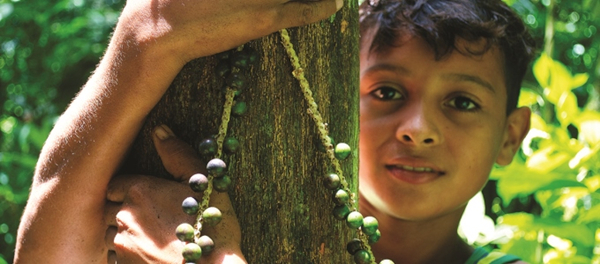Investment in forest conservation can support green growth
 0 Comment(s)
0 Comment(s) Print
Print E-mail China.org.cn, March 21, 2014
E-mail China.org.cn, March 21, 2014
An investment of US $30 billion per year - under seven per cent of the US $480 billion paid in annual global fossil fuel subsidies - in the REDD+ forest conservation initiative can accelerate the global transition to green and sustainable growth and ensure the long-term wellbeing of tens of millions in developing countries, a new report released?yesterday said.
 |
|
Integrating REDD+ programmes into a Green Economy approach can conserve and even boost the economic and social benefits forests provide to human society. [Photo/UNEP]? |
"Building Natural Capital: How REDD+ Can Support a Green Economy," a report by the International Resource Panel (IRP) and the UN REDD Programme, outlines how integrating REDD+ programmes into a Green Economy approach can conserve and even boost the economic and social benefits forests provide to human society.
The IRP report lays out recommendations to deliver the new integrated REDD+ and Green Economy approach, including better coordination, stronger private sector engagement, changes in fiscal incentive frameworks, greater focus on assisting policymakers to understand the role forests play in propping up economies, and equitable benefit sharing. The report stresses in particular the needs for a rights-based approach to ensure that benefits flow to the rural poor.
Reducing Emissions from Deforestation and Forest Degradation in Developing Countries (REDD) is the approach to cut greenhouse gas emissions from deforestation and forest degradation-estimated at up to 20 per cent of the global total-through payments for services. REDD+ is an expanded approach that includes the conservation and sustainable management of forests, and the enhancement of forest carbon stocks.
Forests support the livelihoods of 1.6 billion people, with the value of ecosystem services from tropical forests estimated at an average of US $6,120 per hectare each year. Despite these economic gains, forest loss averaged 13 million hectares per year between 2000 and 2010, according to the Food and Agriculture Organization of the United Nations (FAO). This market and policy failure will undermine sustainable development by destroying the natural capital that supports so many economies.
The report argues that integration of REDD+ into all economic planning processes is essential, as deforestation and forest degradation are driven by consumption patterns in virtually every sector of the economy. Green Economy innovations resulting from REDD+ have the potential to increase the resource efficiency of many of these sectors.
REDD+ is so far backed by a total of US $6.27 billion. However, an estimated US $30 billion is projected to be needed each year from 2020. The IRP report seeks to encourage delivery of this funding by demonstrating that REDD+ approaches can support economic development and increase long-term returns on investments.
The report shows how activities supported by REDD+ can be designed to increase income by boosting output on land under cultivation, developing new green industries, encouraging forest-based ecotourism, and increasing sustainable production of commodities for which demand is increasing. For example, a stimulus package in the sustainable management of forests could provide up to 16 million additional jobs globally. At the same time, restoring just 15 per cent of degraded forest can double household income in rural areas in developing countries, as an example from Tanzania cited in the report shows.
It also points out that an increasing number of countries have Green Economy growth plans that clearly define the role of protecting forests and other natural capital.
The United Nations Collaborative Initiative on Reducing Emissions from Deforestation and Forest Degradation in Developing Countries (UN-REDD)-jointly implemented by the FAO, the United Nations Development Programme (UNDP) and UNEP-supports REDD+ readiness efforts in 49 partner countries in Africa, Asia-Pacific and Latin America.





